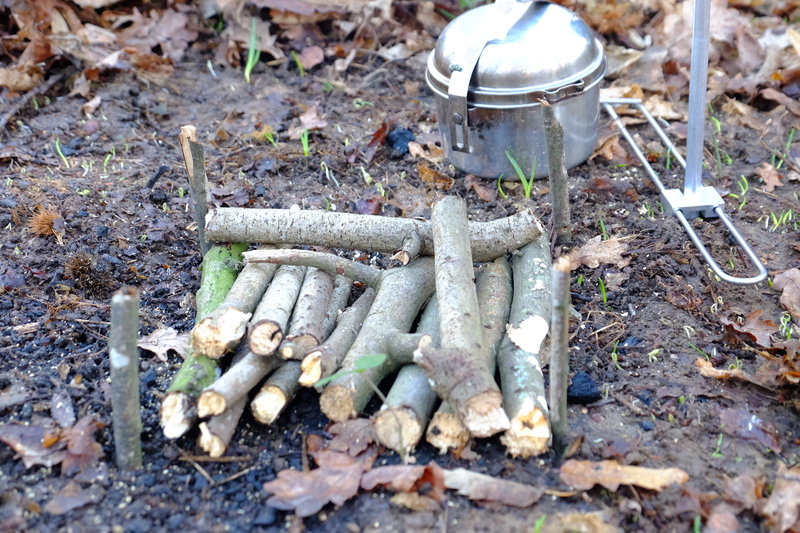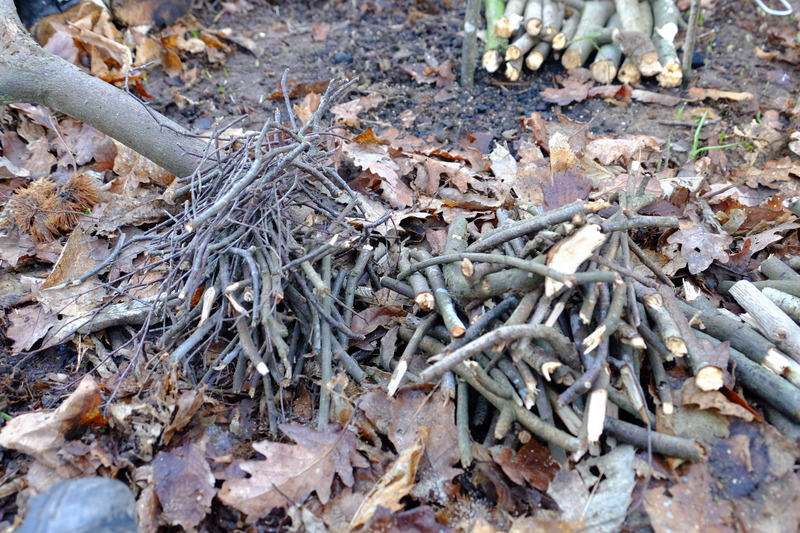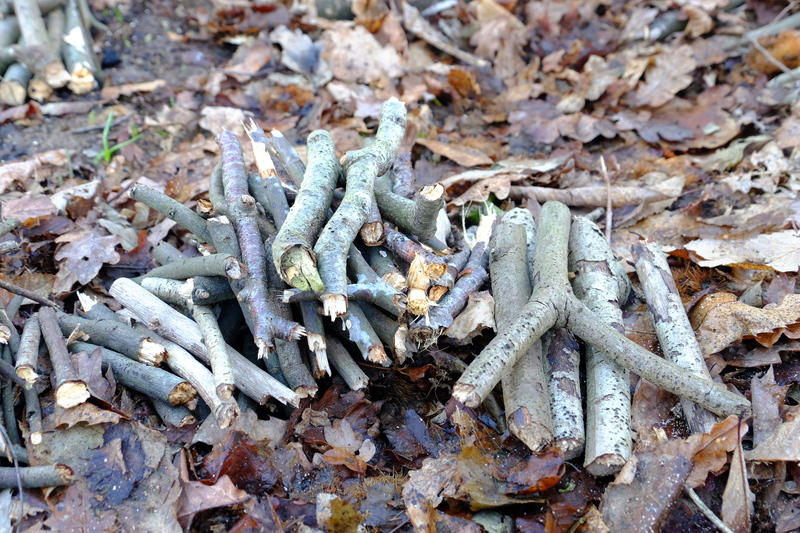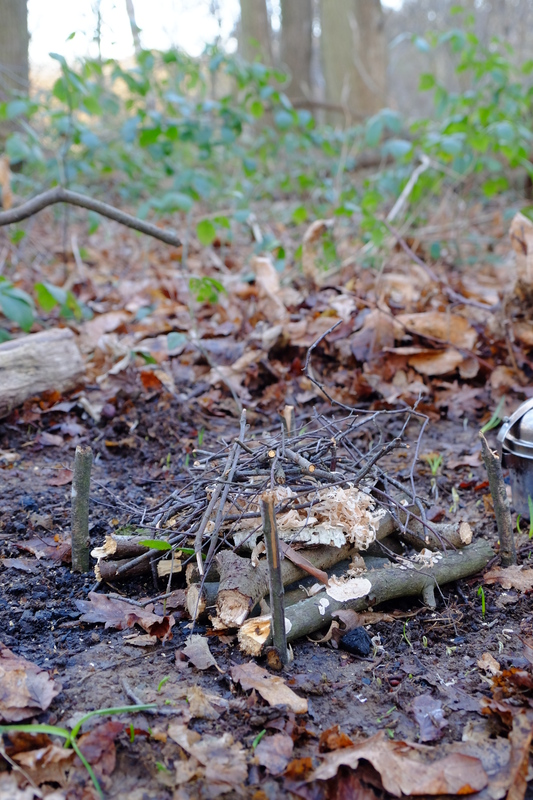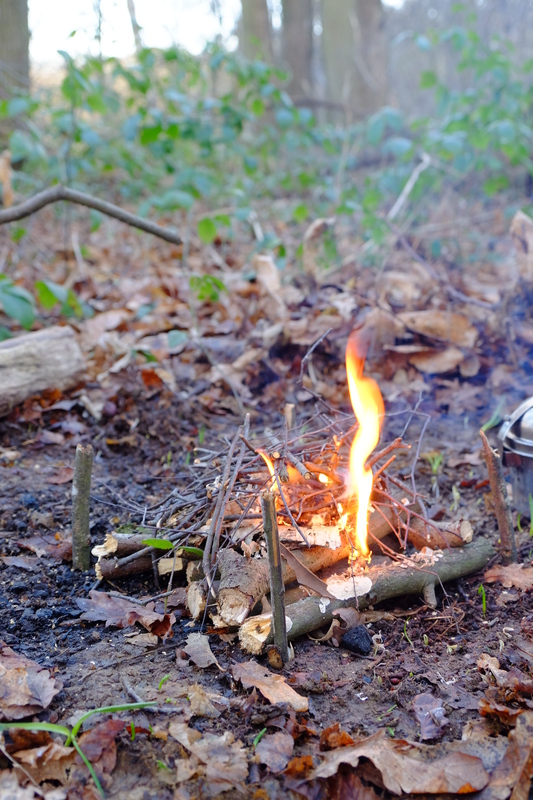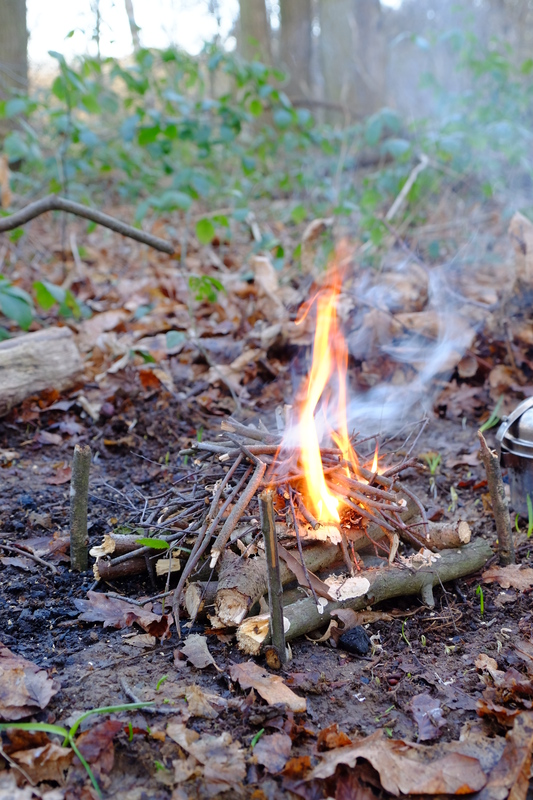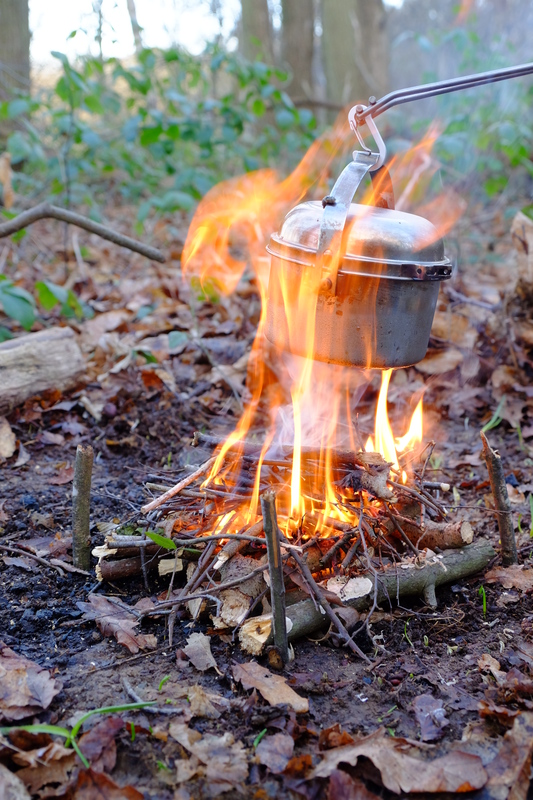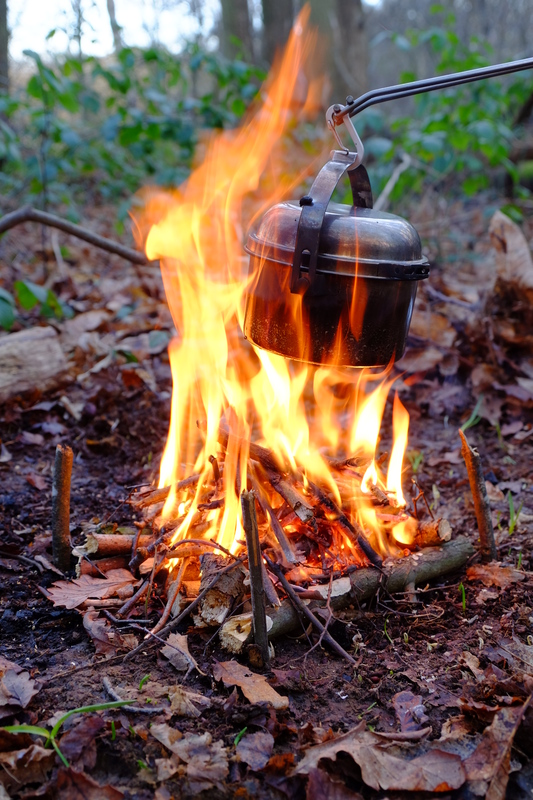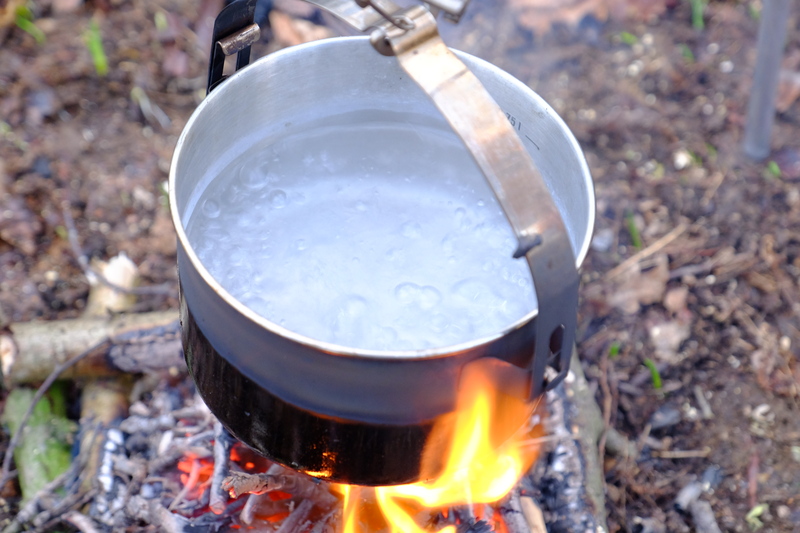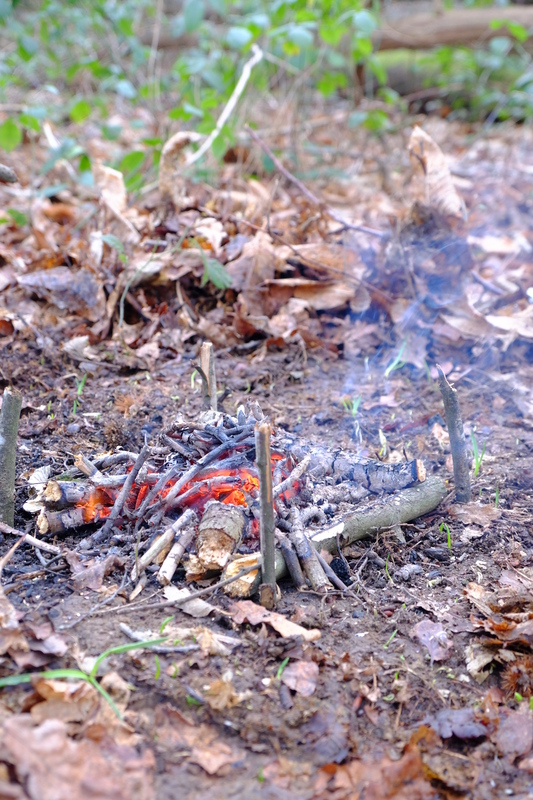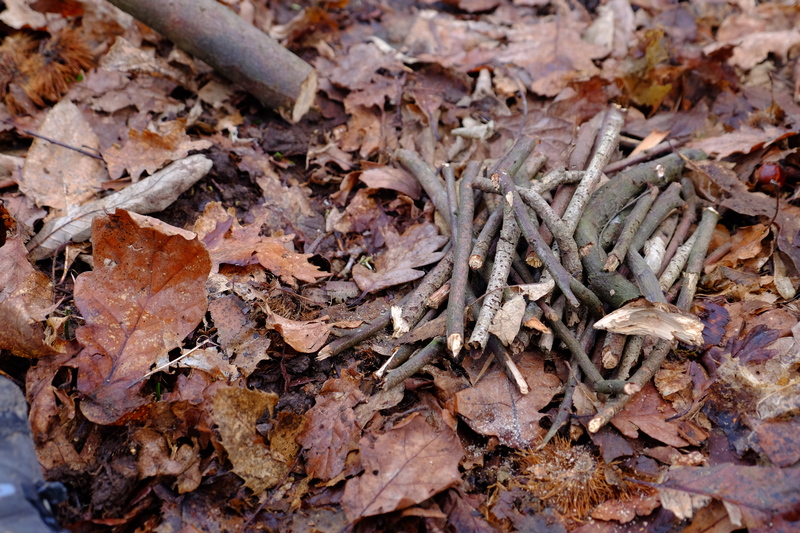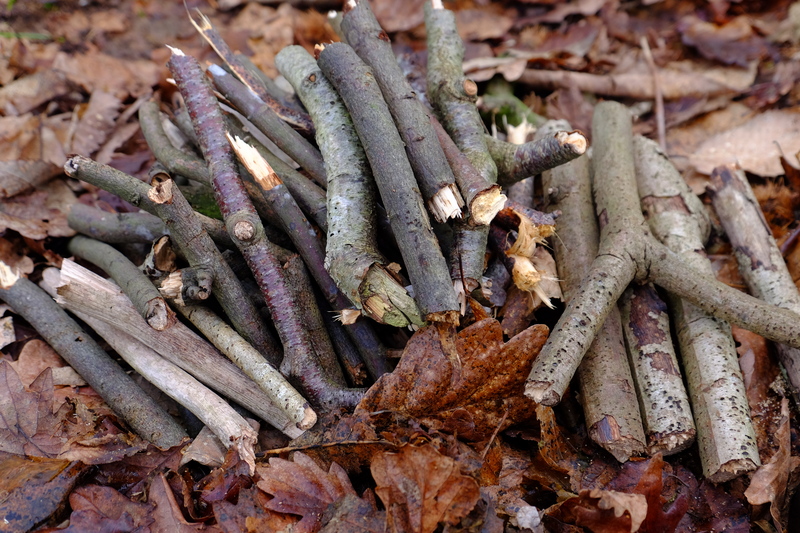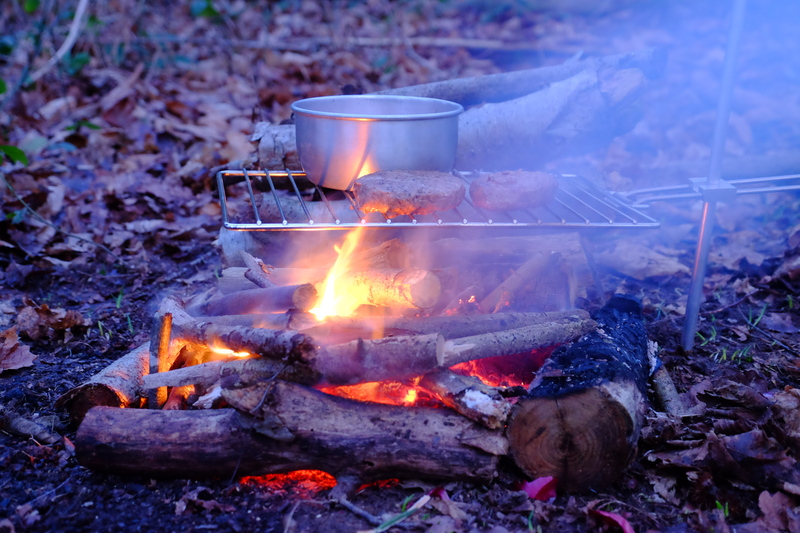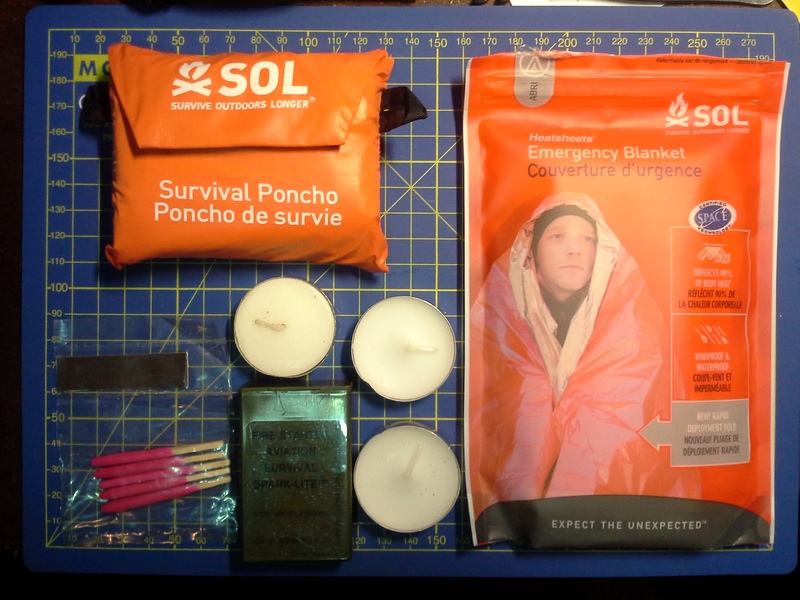When out and about I often find huge fire scars from where people have lit large camp fires and always despair at the damage and the wastefulness of such a large fire.
So I thought while I was out in the woods, I’d take some pictures of a simple camp fire that’s big enough to cook over without needing to deforest half of Kent.
In order to give a sense of size I’ve put 4 pegs in marking a the corners of a square one Bahco Laplander(folded) by one Bahco Laplander(folded) each side. Or if you prefer 235mm x 235mm (approx 9¼” x 9¼” in old money). That’s an area of 0.0552m² (or 0.594ft²).
I started off by laying a raft of small logs, these are roughly an inch or so in width.
Then I prepared a 4 piles of wood. The first is wood less than a pencil’s width in thickness, then we have finger thickness, then thumb thickness, than a few pieces that were slightly larger.
Materials prepared and ready to go, I arranged a small pile on the raft. This consisted of a couple of pieces of birch bark I found on fallen tree, and some wood shavings, with a handful of the thinnest wood on top of that.
With everything prepared, I lit a tinderquik fire tab with a spark from my sparklite. This was then placed into the centre of the wood shavings and birch bark.
It didn’t take long for the bark to catch the small kindling.
With the fire well lit I fed it with material from the piles, working up in size as each pile was exhausted. I also put a Tatonka 1L billy can over the fire with the 0.5L of water needed to make a mug of tea.
In some respects this fire was a little over kill for the size of the pot I was boiling, but I wanted the ember bed for use later to cook a jacket potato.
But it didn’t take long for the pot to come to the boil.
With the tea stewing, the fire starts to die down a bit. At this point if I was cooking something abit more substantial I could feed some more into to keep it going. But if not, just leaving it to burn down at this point, before dowsing it in water when ready to move away would work.
How much fuel did this small fire use? Not much. I used all of the pencil thin pile, half of the finger pile, and a few pieces from the bigger pile.
Tea drunk, we built the fire up a bit in order to cook 2 meals. The same basic size was maintained, but we added a larger log on each side to give it some structure, and piled a few of the thicker logs on. The log on the right of the picture is let over from a previous fire on this site.
All in all this 0.0552m² fire was used to cook a pot of baked beans, a pair of lamb burgers, a jacket potatoe and 1L of chicken stew. As well as a couple of mugs of tea, and a tin of charcloth. It then provided us with a fire to sit by on the chilly (0°C) evening as we enjoyed the woods.
Some times a big fire is the right thing to do. But most of the time a small fire is just the trick. It even comes with the added advantage that you don’t need to collect as much firewood. The only tool I used for the processing of wood on this fire was the Bahco Laplander.


